“It’s hard to be healthy in the U.S. today.” That is the underlying premise and reason for The Building H Index.
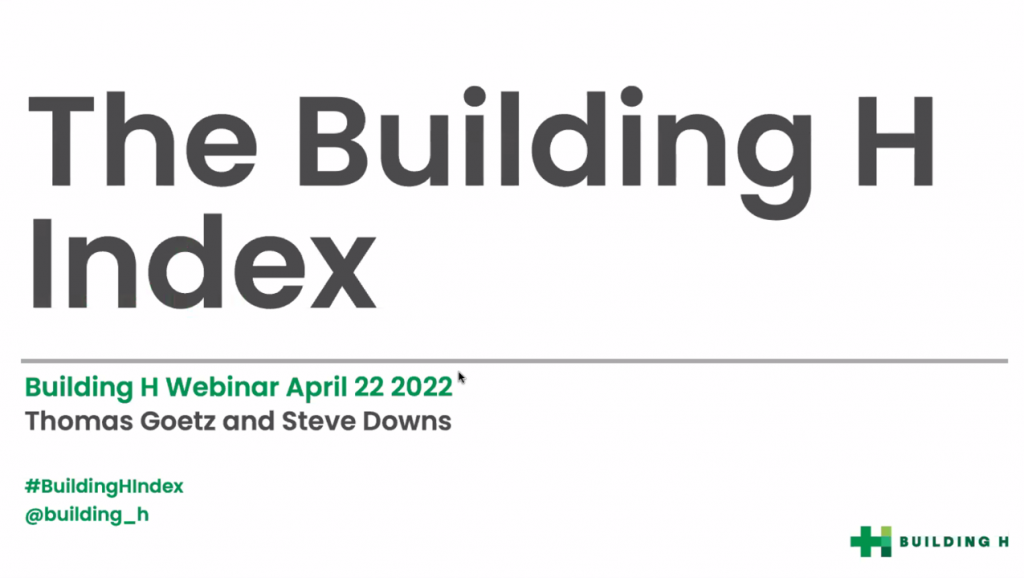 Health happens outside of doctors’ offices and hospital operating rooms. Health is made in our homes, in our communities, in our daily lives as we go about working, playing, learning, and praying.
Health happens outside of doctors’ offices and hospital operating rooms. Health is made in our homes, in our communities, in our daily lives as we go about working, playing, learning, and praying.
Too often, in those daily life-flows, making a healthy decision is harder than defaulting to a less-healthy one. Sometimes, it’s pretty impossible given the state of, say, air quality that we breathe, lack of fresh produce and whole foods at the corner market, or seductively designed automobiles we just love to drive.
The master-builders of the Index, Steven Downs and Thomas Goetz, explained the project’s methodology and top-line results in a Zoom call last week — actually on Earth Day 2022.
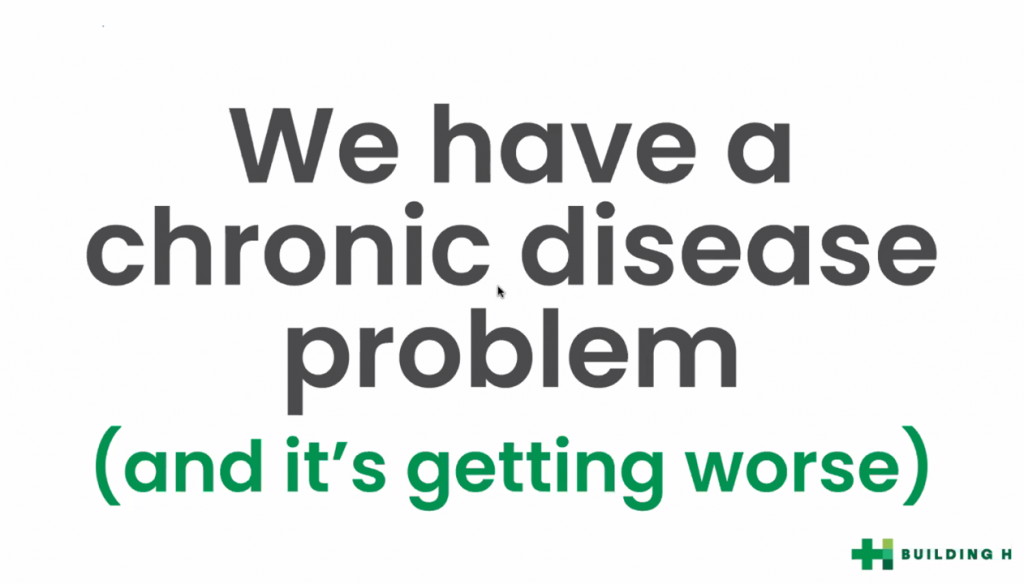 We have a chronic disease problem, and it’s getting worse: “the U.S. is mired in an epidemic of chronic health conditions, from obesity to diabetes to heart disease to mental health or mood disorders,” the Index’s report explains. “The numbers here are staggering: More than 42% of American adults live with obesity. 10% now have diabetes and another 30% are pre-diabetic. Half of Americans have underlying heart conditions…The numbers – and the human toll associated with them – continue to rise year after year. And they’re projected to get worse: by the end of the decade, the prevalence of diabetes is predicted to grow by nearly 50% and, by one estimate, 50% of Americans will be living with obesity,” statistics that quantify the extent of the challenge the Index seeks to address.
We have a chronic disease problem, and it’s getting worse: “the U.S. is mired in an epidemic of chronic health conditions, from obesity to diabetes to heart disease to mental health or mood disorders,” the Index’s report explains. “The numbers here are staggering: More than 42% of American adults live with obesity. 10% now have diabetes and another 30% are pre-diabetic. Half of Americans have underlying heart conditions…The numbers – and the human toll associated with them – continue to rise year after year. And they’re projected to get worse: by the end of the decade, the prevalence of diabetes is predicted to grow by nearly 50% and, by one estimate, 50% of Americans will be living with obesity,” statistics that quantify the extent of the challenge the Index seeks to address.
But even with the explosion of funding for digital health innovations such as wearable trackers, remote health monitors, and thousands of apps downloadable to our smartphones, the burden of chronic care continues to grow.
![]() Simply put, the forces that shape the determinants of health — food, transportation, environment, urban planning, among them — aren’t resolvable by most of the current tech solutions.
Simply put, the forces that shape the determinants of health — food, transportation, environment, urban planning, among them — aren’t resolvable by most of the current tech solutions.
This diagram of the streaming services, “Netflix, Hulu, HBO,” et. al., was one of several illustrations presented in the session. In this case, how can our sleep tracking technology — whether slick Oura ring, Fitbit, or smart mattress — combat the lure of binge-watching brilliantly written entertainment that lures us into “just one more episode” of binge-watching….thereby un-doing our best-laid plans to sleep better on our high-priced mattress and/or pillow?
The size of the font used in the graphic represents the brute force of the compelling content which so deeply engages us compared with the tiny font of “sleep tracker,” well intentioned but fairly powerless in the face of scriptwriters and social media-recommended content served up just for us.
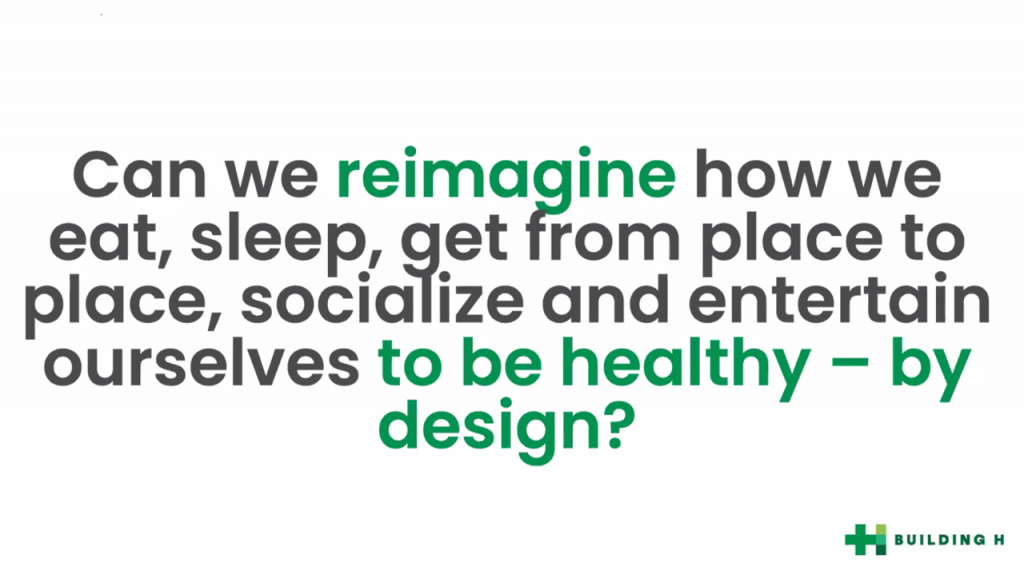 The Building H Index is, in their words, flipping the script to reimagine how to bake health-by-design into companies’ product and service offerings.
The Building H Index is, in their words, flipping the script to reimagine how to bake health-by-design into companies’ product and service offerings.
In this first round of assessments, the Index recruited a group of consumers to evaluate companies’ offerings in four sectors, across several dimensions of experience or consumer behavior:
- Eating
- Physical activity
- Engaging socially
- Sleeping, and
- Getting outdoors.
The initial sectors covered included entertainment (Netflix, Hulu, Niantic, HBO Max, Apple TV, Prime Video), food (Subway, Instacart, Doordash, Blue Apron, HelloFresh, Grubhub, Burger King, Taco Bell), Housing (AvalonBay, Culdesac, Common, KB Home, Equity Residential), and transportation (Lyft, Lime, Bird, Transit).
After conducting consumer survey research, reviewing company publications and news stories, crowdsourcing ratings with the 80 volunteers, and inviting input from the companies themselves, the Building H Index divined overall rankings for the organizations across the four sectors.
Housing and transportation companies emerged higher as sectors than entertainment and food. Within the food category, the subscription food services came up higher than fast food.
But the entertainment companies, so excellent at what they do, ranked last: they are keeping us on the proverbial couch, it seems.
 Health Populi’s Hot Points: As Thomas was talking about food systems in the U.S. in this context, I was reminded of the impactful evidence-based book by Dr. Robert Lustig appropriately titled Metabolical with the tagline, “The Lure and the Lies of Processed Food, Nutrition, and Modern Medicine.” In this graphic from Building H’s session, note the huge force of the food environment compared with the well-meaning mantras of “eat less, move more” and “calories in, calories out.”
Health Populi’s Hot Points: As Thomas was talking about food systems in the U.S. in this context, I was reminded of the impactful evidence-based book by Dr. Robert Lustig appropriately titled Metabolical with the tagline, “The Lure and the Lies of Processed Food, Nutrition, and Modern Medicine.” In this graphic from Building H’s session, note the huge force of the food environment compared with the well-meaning mantras of “eat less, move more” and “calories in, calories out.”I’ve been living in a new product-and-service environment for the past six months where within steps of my home, I walk to purchase fresh food in a “zero-kilometre” foodstyle, access public transportation when I need to travel further afield, and can sleep with windows open listening to birdsong and breathing very fresh air supporting rest and re-charging each evening.
Thomas’s food discussion reminded me of one of the two grocery chains I frequent in Brussels, called Delhaize.
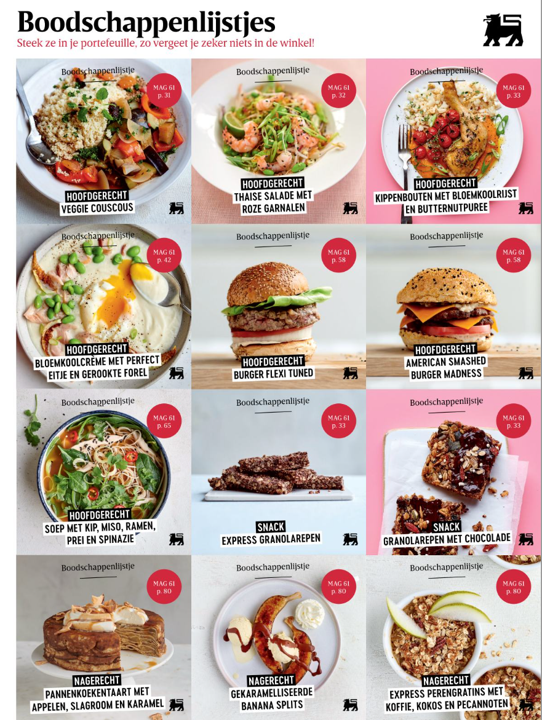 This image comes out of the recipe section of the store’s bimonthly publication, showing beautifully photographed dishes the backs of each bearing the recipe which ties to store brands accessible to shoppers.
This image comes out of the recipe section of the store’s bimonthly publication, showing beautifully photographed dishes the backs of each bearing the recipe which ties to store brands accessible to shoppers.
I point you to the second image in the right (third) column called “American Smashed Burger Madness.”
“American?”
Indeed, this is the perception of USA food consumption and culture in many parts of the world.
Compared this with most of the other images shown, combining fresh produce, lean meats and seafood, and ingredients from the perimeter of the store.
Delhaize began to offer discounts on healthier food through their “SuperPlus” loyalty card program. A shopper who purchases groceries with a Nutri-Score of “A” or “B” receive a discount on the products. Most of what I’ve been buying have garnered 5% savings, which over time really adds up to real money — and healthy eating.
More U.S. grocers have been re-imagining and -stocking their store aisles with greater attention to health, and in the pandemic have emerged as health destinations with pharmacies, some with telehealth access, and dietitians.
With that in mind, I hope the Building H team will add in grocery chains and retail pharmacies to their mix of consumer-facing company sectors considered in the Index.
Onward, toward health, well-being, and good cooking and eating!
For more on the Delhaize healthy food Nutri-Score program, this video explain. If you don’t speak Dutch, don’t worry — it’s very well-designed and you’ll get the gist!


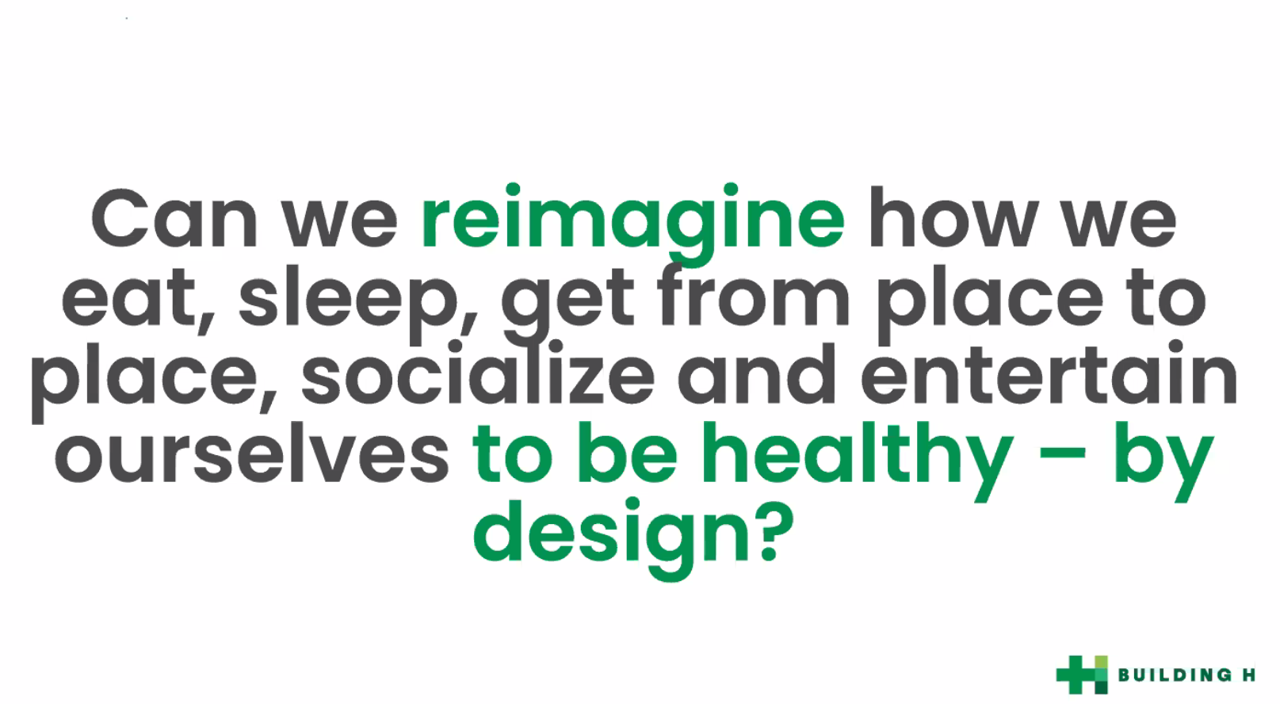


 Interviewed live on BNN Bloomberg (Canada) on the market for GLP-1 drugs for weight loss and their impact on both the health care system and consumer goods and services -- notably, food, nutrition, retail health, gyms, and other sectors.
Interviewed live on BNN Bloomberg (Canada) on the market for GLP-1 drugs for weight loss and their impact on both the health care system and consumer goods and services -- notably, food, nutrition, retail health, gyms, and other sectors. Thank you, Feedspot, for
Thank you, Feedspot, for  As you may know, I have been splitting work- and living-time between the U.S. and the E.U., most recently living in and working from Brussels. In the month of September 2024, I'll be splitting time between London and other parts of the U.K., and Italy where I'll be working with clients on consumer health, self-care and home care focused on food-as-medicine, digital health, business and scenario planning for the future...
As you may know, I have been splitting work- and living-time between the U.S. and the E.U., most recently living in and working from Brussels. In the month of September 2024, I'll be splitting time between London and other parts of the U.K., and Italy where I'll be working with clients on consumer health, self-care and home care focused on food-as-medicine, digital health, business and scenario planning for the future...